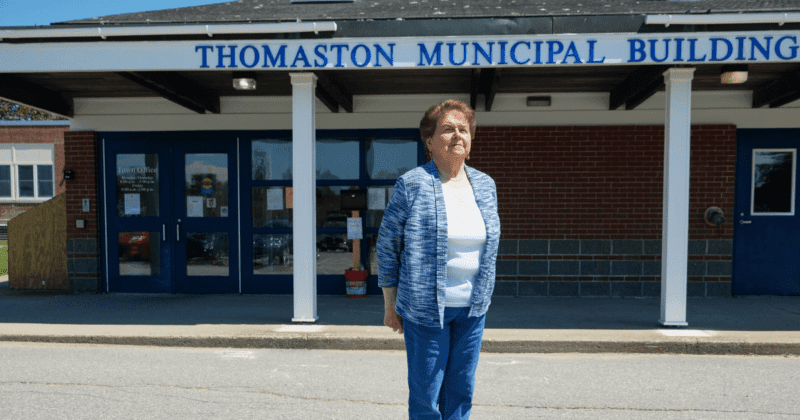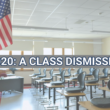In 16 years operating the Thomaston polls, Joanne Richards has never confronted such a “scary” election season.
“It’s a nightmare to figure out how to do this safely,” said Richards, the town’s deputy warden, about the July 14 primary and Nov. 3 election.
Polling places could become petri dishes for COVID-19 transmission – with people funneling in and out through single doors, meeting face-to-face over tables to confirm registrations and receive ballots, and using communal voting booths and touchscreens.
Richards has discussed countless options for configuring the polling place with Thomaston’s town manager and warden, only to conclude that “You can’t logistically keep people six feet apart.”
All of Thomaston’s usual ballot clerks – who range in age from 60 to 95 – have declined to serve this year, fearing exposure to the coronavirus. While a voter might encounter up to 20 people, a poll worker can reportedly come in contact with 700 individuals, some of whom may not wear a mask.
Like Richards, administrators in cities and towns across the state are scrambling to determine the best way to safely conduct the July primary. The issue has become a political firestorm in recent weeks, fueled by President Trump’s efforts to undermine mail-in voting efforts across the country.
In Maine, Gov. Janet Mills and her administration have to weigh two vital civic concerns: the integrity of the July 14 primary and the safety of the state’s citizens.
Nearly one in five Maine residents is age 65 or older, placing them in the Centers for Disease Control and Prevention’s “high-risk” group for “severe illness.” Chronic disease can also worsen COVID-19 outcomes, and Maine has asthma and obesity rates well above the national average.
To reduce transmission risk at Thomaston’s polling center, Richards said (the town) “will do everything we can to push absentee voting.” She has written state legislators, the governor and the secretary of state asking for a similar commitment, and has even appealed to fellow citizens in a letter to the editor published by the Portland Press Herald.
The Super Tuesday presidential primary in March drew more voters than was typical in Thomaston, a town of 2,700 people in Knox County. The July primary — with two referendums and numerous legislative contests — could do the same. It will also set the stage for November’s general election, which concerns Richards even more. She expects voter turnout to be especially high this fall, with a presidential race at the top of the ticket.
Richards believes everyone deserves the right to safely cast a ballot. There shouldn’t be “low turnout because people are terrified,” she said.
Seeking guidance

Matthew Dunlap, the Maine secretary of state, acknowledges that among election workers there’s “a lot of fear about where we’re going to be July 14.” His office considered a switch to all-absentee voting in March, but the staff realized that transition might be complicated because the town offices charged with distributing and receiving absentee ballots were closing.
The state now intends to open polling places while encouraging residents to request and use absentee ballots to minimize crowding. Mills removed the advance deadline for requesting an absentee ballot in April, allowing those requests to be made on voting day, which she called a “major step” toward accessibility.
But the Maine Town and City Clerks’ Association (MTCCA), objects, preferring an all-absentee ballot primary, with provisions for opening municipal offices around the primary to accommodate those who require in-person voting (such as residents doing same-day registration or those with disabilities or no mailing address).
Making the primary an all-absentee election, Dunlap said, would require an executive order from the governor and an educational campaign from his office, similar to what was done for ranked-choice voting in 2016. That decision must be made by June 14 – a month before the July 14 primary – but ideally sooner, he added.
Mills said Wednesday afternoon that she did not have plans to issue an executive order for an all-absentee election but that she has been in regular contact with Dunlap’s office, municipal officials and clerks.
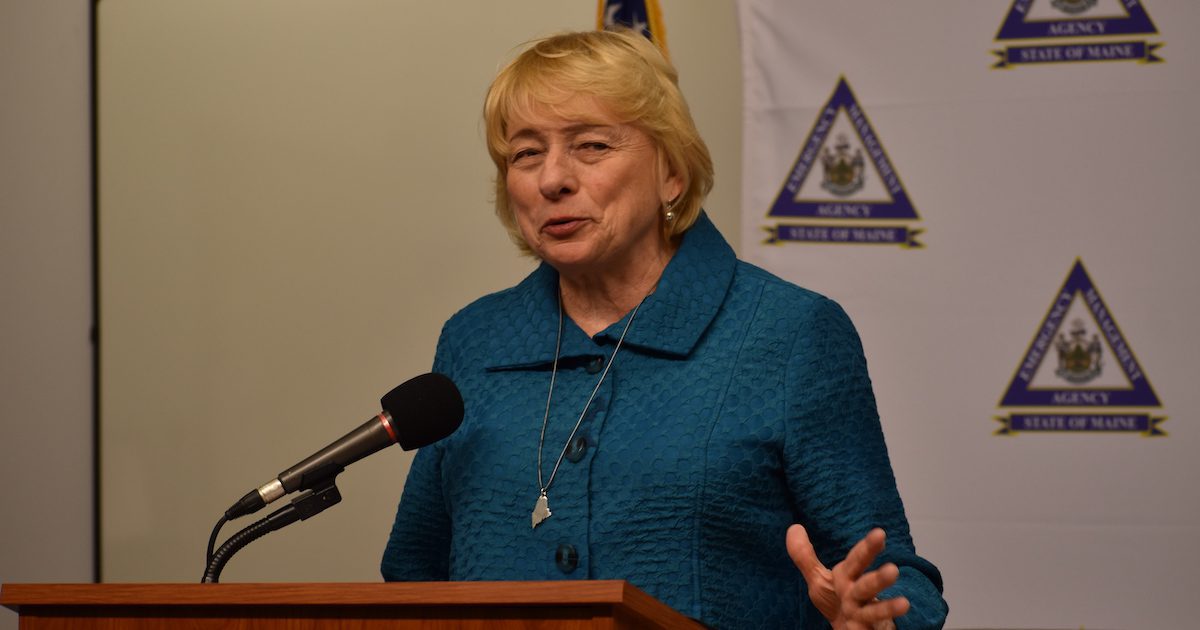
“At this point we want to preserve the right for individuals to vote in person; preserve that opportunity,” she said at the Maine Center for Disease Control and Prevention daily coronavirus briefing Wednesday. “But we are also talking about guidance that the secretary of state can give regarding how that’s done.”
That guidance, she said, includes putting up plexiglass barriers between clerks and voters and buying personal protective equipment for poll workers, though it is unclear who would foot the bill.
Without a statewide all-absentee order from Mills, election practices will vary from town to town. The governor did not express concern that some municipalities may feel pressured to open polling locations without adequate staff or protection for workers.
“That really is a question for the secretary of state, Matt Dunlap, who’s been in constant contact with the ballot clerks and the registrars of voters across the state,” Mills said. “I talk with him (and) he communicates to me what some of the things (are) that they’re talking about, but I think it would be speculative of me to say that the result right now would be a patchwork.”
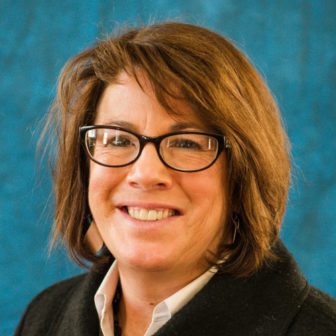
Katherine Jones, MTCCA president and Portland city clerk, said a lack of guidance from the state has left municipal staff nervous about facing altered practices and protocols in an exacting election system that is “based on a timeline” and “defined by state statutes.”
As the country struggles to navigate safe, secure and accessible voting in a pandemic, nonpartisan national groups have issued guidance. The Brennan Center for Justice advocates that “each state government establish an election pandemic task force to determine how best to implement relevant policy recommendations in their state.”
Dunlap said Maine has not created an election task force but he hasn’t ruled out forming one. MTCCA would like to participate in that sort of work group, Jones said, so that clerks navigating new procedures have input on how the election process this year will work.
In the absence of a formal task force, the Maine Voting & Elections Coalition, which represents more than a dozen organizations, including the League of Women Voters of Maine (LWVM), AARP of Maine, Maine AFL-CIO and Maine Conservation Alliance, drafted its own recommendations in early April for voter registration, state election administration, polling place procedures and ballot tabulation. The Coalition sought to avoid having Maine repeat the mistakes evident in Wisconsin’s April 7 primary, where residents had to wait hours in line and risk infection at crowded polling places.
In May, the coalition submitted 2,334 petition signatures to Mills, calling on her to sign an executive order providing for several measures, including that an absentee ballot be mailed to every registered voter with return postage.
Municipal and state officials see the July primary as a training ground for the higher-turnout presidential election in the fall, but those lessons could come at a cost.
Initial research following the Wisconsin primary identified no subsequent rise in cases, but the latest study (not yet vetted) found “a statistically and economically significant association between in-person voting and the spread of COVID-19 two to three weeks after the election.”
Access to absentee ballots
Municipal offices around Maine have already begun promoting absentee voting for “the protection of the overall community,” said Kathy Montejo, Lewiston city clerk and MTCCA’s former president. Widespread use of absentee ballots could assuage concerns of coronavirus transmission while maintaining Maine’s tradition of high voter turnout (65.9 percent overall in the 2016 elections).
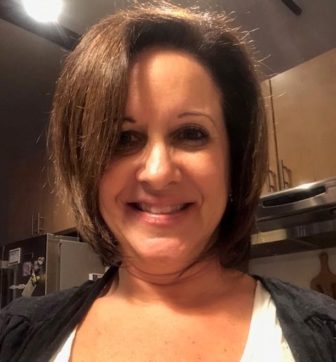
Since 1999, Maine has offered “no excuse” absentee voting, meaning that any registered voter can request an absentee ballot (online, in writing or by phone) without needing to specify a reason. Use of absentee ballots has increased from about 5 percent in 1998, Dunlap said, to 33 percent in 2016. Nationally, 24 percent of voters in 2016 relied on mail ballots, according to the U.S. Election Assistance Commission (EAC).
Carmen Morris, Biddeford’s clerk, has watched that growth in her work over 26 years. Biddeford residents first requested absentee ballots in protest, unhappy with the city’s decision to consolidate polling locations. What “began as a rebellion,” she recalled, quickly became an enthusiastic embrace of voting at home.
Voters realized they could inform themselves about issues and candidates after reading over the absentee ballot, rather than realizing – in the voting booth – that they weren’t sufficiently informed. And they could cast ballots without concerns about missed work, childcare or transportation. A wide demographic of voters, Morris said, concluded “This is amazing. I’m going to keep doing this.”
With the added incentive of social distancing in 2020 elections, the nonpartisan National Vote at Home Institute predicts that states may see mail ballots reach 50 to 70 percent of the total.
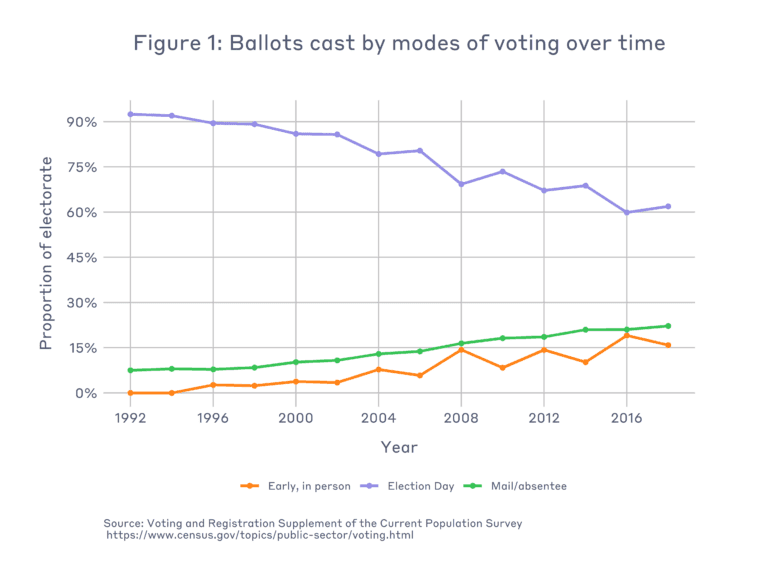
Nationally, voting by mail grows more popular (and contentious)
The convenience of voting at home has already prompted six states to adopt all-mail systems: Every registered voter receives a ballot in the mail – to complete and return through the postal service or a secure drop box. Sixteen additional states offer voters a chance to sign up for ongoing (permanent) mail ballots.
Many of these states also have increased educational outreach, sending sample ballots and voter guides to residents.
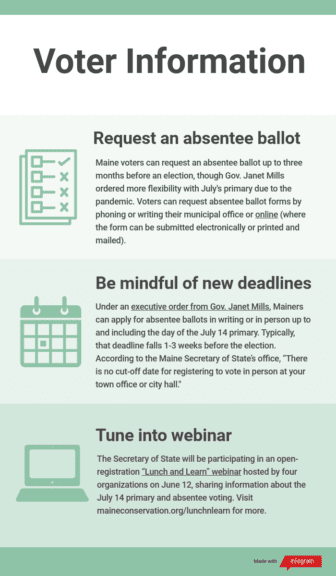 Outreach to voters is far more challenging in Maine due to its home-rule tradition, noted Kathleen Meil, director of policy and partnerships for Maine Conservation Voters. And unequal access to the internet raises a “huge equity concern,” she said, for people trying to request absentee ballots or register to vote who may now be thwarted by closed municipal offices. (A bond question to fund expanded broadband is on the July primary ballot.)
Outreach to voters is far more challenging in Maine due to its home-rule tradition, noted Kathleen Meil, director of policy and partnerships for Maine Conservation Voters. And unequal access to the internet raises a “huge equity concern,” she said, for people trying to request absentee ballots or register to vote who may now be thwarted by closed municipal offices. (A bond question to fund expanded broadband is on the July primary ballot.)
Several polls conducted in April reveal increasing support nationally for voting at home, particularly during the pandemic. A Reuters poll found that 72 percent of Americans (79 percent of Democrats and 65 percent of Republicans) want mail-in ballots required if virus exposure remains a threat. The Pew Research Center reported that 70 percent of respondents favored allowing any voter to vote by mail if they want, while just over half (52 percent) favored conducting all elections by mail (an increase of 18 percentage points over 2018). A third poll by NBC and the Wall Street Journal found that 67 percent of those surveyed supported use of vote-by-mail in this year’s general election, with 58 percent open to making vote-by-mail an ongoing option.
The National Conference of State Legislators is educating its membership on the potential advantages and challenges of voting at home, and in early March the League of Women Voters of Maine completed a preliminary analysis of universal vote-by-mail. Even before the pandemic, this had become a “pretty hot topic” nationally, noted Penelope Hamblin of the league’s advocacy team. “Now it’s red hot.”
The mail ballot option was rarely politicized historically. Many election administrators – both Democrats and Republicans – see mail ballots simply as a means to ensure accessible elections, not as a way to benefit a particular party, a view supported by recent research from Stanford.
As Sen. Angus King told a virtual town hall in April, “This is not a partisan issue. This is about democracy.”
President Trump, despite voting by mail in at least three elections, is undercutting that bipartisan consensus with unfounded claims that “mail ballots, they cheat” and don’t “work out well for Republicans.” On May 20, he threatened to withhold funds from two states that are expanding their vote-by-mail options in response to the pandemic.
“Dark claims of voter fraud” aside, said Dunlap, deliberate tampering with absentee ballots is “really, really rare.” In his 14 years as secretary of state, only two cases of potential voter misconduct were identified and both were determined to be due to voter confusion. Maine and other states have instituted an array of safeguards for absentee ballots, such as signed envelopes and signature verification.
Even states that rely almost exclusively on mailed ballots report few concerns about fraud or corruption. Phil Keisling, former secretary of state for Oregon – the first state to adopt all-mail voting in 2000, wrote that of the roughly 100 million ballots mailed to Oregon’s registered voters as of 2016, “there have been just a dozen documented cases of fraud or coercion – none of them organized, much less consequential, and all of them of the single ballot variety … that’s .0000001 percent of all votes cast.”
In Keisling’s view, “mail-based voting systems today are far less risky than most polling place elections, precisely because they distribute ballots (and electoral risk) in such a decentralized way.”
A logistical and financial stretch
A bigger concern for Maine is the logistical challenge of ramping up from handling roughly a third of ballots completed absentee, to elections – at least in the short term – that could be predominantly absentee. Most of the states that adopted all-mail voting implemented changes over years, not months, and invested in new technology such as online tracking of ballots.
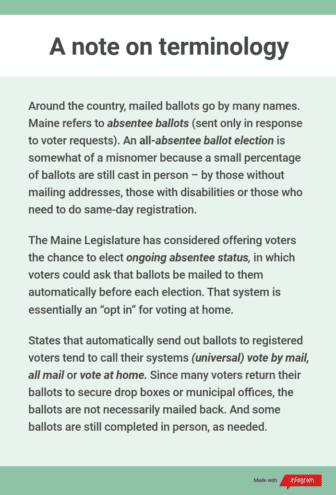 Maine’s efforts to distribute and process more absentee ballots this summer and fall could also be hampered by lack of federal funding.
Maine’s efforts to distribute and process more absentee ballots this summer and fall could also be hampered by lack of federal funding.
As part of the CARES Act that Congress passed in March, Maine requested nearly $3.3 million from the national Election Assistance Commission to help print and distribute additional absentee ballots and envelopes, lease more tabulation devices for processing those ballots, and adopt measures to improve sanitation and worker protection at in-person polls.
But with budget shortfalls, Maine lacks sufficient funds to meet the required 20 percent match ($658,000) for that award. Legislative approval would be needed, and the Legislature is adjourned. Maine’s congressional delegation is contesting the match requirement with House and Senate leadership but they are, in Dunlap’s words, “four (members) among 535” and the requested waiver may not be granted.
Increasingly dire state budget numbers could prevent Maine from adopting some supports recommended for absentee voting. Online voter registration, offered in 39 states but not Maine, would improve access given closed municipal offices and canceled voter registration drives. But Dunlap does not see this step as likely now; “we don’t have resources, don’t have the mandate and honestly don’t have the time.”
In 2019, the Legislature approved automatic voter registration, allowing residents to register electronically through the Bureau of Motor Vehicles when they receive or renew a driver’s license. Dunlap said the state had “just started building” that initiative but had to set it aside due to the pandemic. To minimize the spread of the coronavirus, Dunlap ordered BMV offices to close March 17.
Complicating the picture further is the financial insolvency of the U.S. Postal Service, due in large measure to a 2006 congressional act requiring the USPS to pre-fund retiree health benefits for 10 years, at an annual cost of roughly $5.5 billion. Instead of the $13 billion grant it sought to make payroll and continued mail delivery past September, the USPS received a $10 billion loan under the CARES Act that will require approval by the Treasury Department.
Further expanding voter choices
The process of obtaining an absentee ballot in Maine is easy for voters, but not automatic. Voters typically must request a ballot before every election, though Mills extended that deadline for the upcoming primary to the day of the July 14 election.
In an effort to make voting easier (and unaware that keeping such a list violated current election law), Biddeford for a period of about five years, starting in the late 1990s, routinely mailed out absentee ballots to those who requested “ongoing absentee” status. It was a convenience that voters appreciated, Morris said.
Biddeford’s positive experience prompted Rep. Ryan Fecteau (D-Biddeford) to propose legislation that would allow voters to select “ongoing absentee status” and receive an absentee ballot automatically in the mail before each state election. The initial bills in 2017 and 2019 did not make it out of committee.
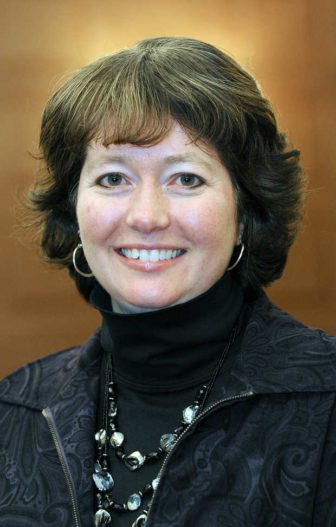
The MTCCA and the Maine Municipal Association have testified repeatedly against an ongoing absentee option, arguing that the process to request absentee ballots is already easy and an ongoing option could add to security concerns and administrative burdens (given address changes).
To receive an absentee ballot, “a voter has to take the initiative,” said Montejo, the Lewiston city clerk. “It’s really no different than going to the polls” – except that “you’re doing it from the convenience of home.”
In the last Legislative session, another bill to permit ongoing absentee voter status (LD 2067) was amended in committee to require that voters renew their absentee ballot request annually. The bill received a divided committee report and did not go before the full Legislature before the March adjournment.
A lot has changed since then, and the bill’s sponsor, Sen. Linda Sanborn (D-Gorham), said “some of the ways we can request ballots aren’t as convenient now. People may look at this (proposal) differently.”
Time is of the essence
With only six weeks left until its primary, Maine is floundering — without safety measures for in-person voting or a clear directive and plan for an all-absentee-ballot primary.
“There’s so much to elections,” said Jones, the Portland city clerk. Each one requires weeks and months of carefully choreographed preparations.
Even before the pandemic, the U.S. election season faced heightened challenges — with strong evidence of ongoing foreign interference, voters struggling to identify misinformation on social media and partisan rancor over voting procedures.
Now, in a pandemic, those who plan and orchestrate elections face added challenges – needing to institute demanding safety precautions and address the fears of voters and election workers. One goal and directive of the secretary of state’s office is that every qualified voter can safely and securely vote.
“What we deliver is not results,” said Dunlap. “What we deliver is public confidence.”
Staff writer Samantha Hogan contributed to this report.

